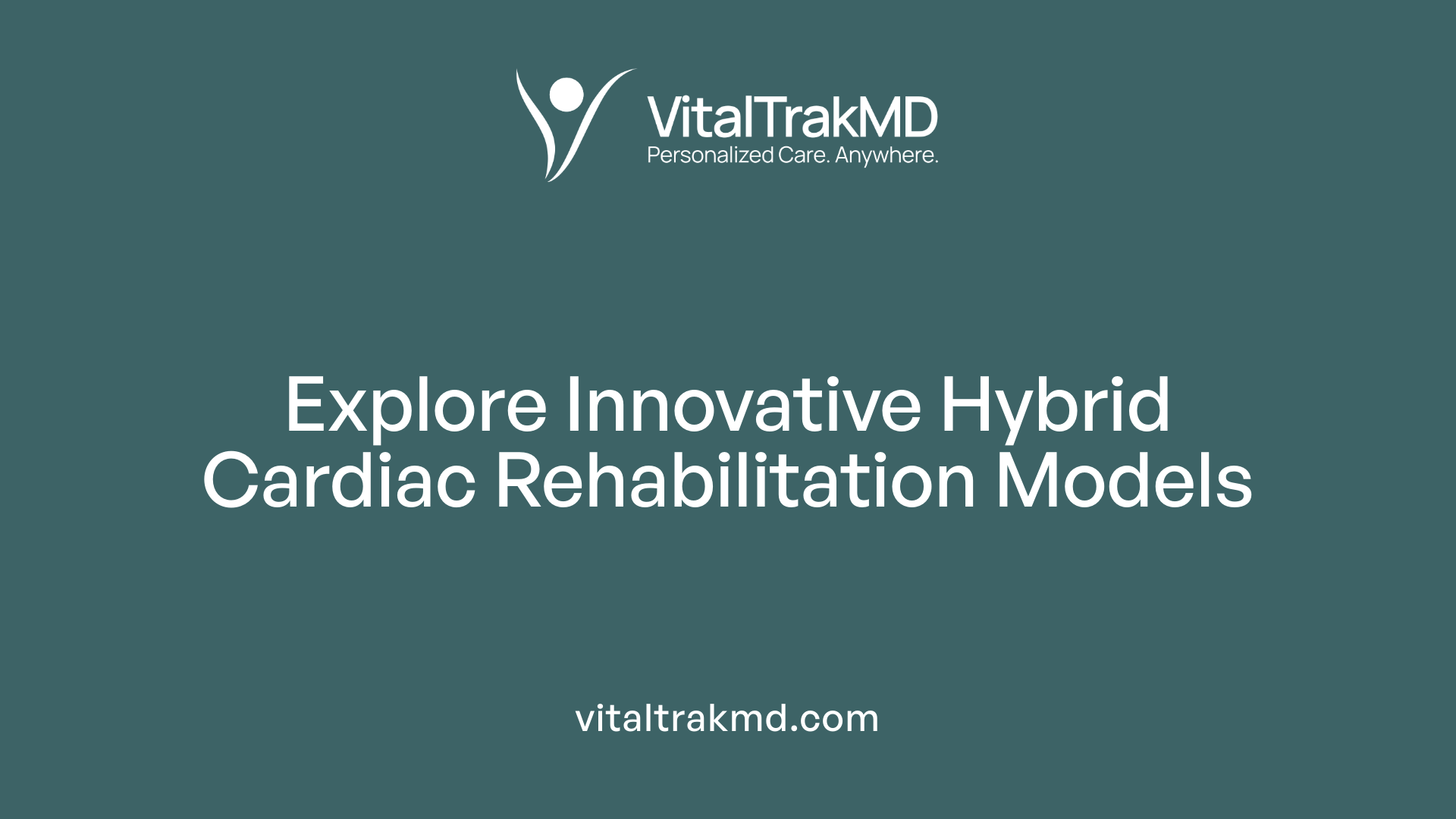Cardiovascular Health Services Available Through Hybrid Senior Care

Transforming Cardiac Care in the Senior Population
The landscape of cardiovascular healthcare for older adults is rapidly evolving, driven by advanced technology, hybrid care models, and specialized facilities. These innovations aim to improve outcomes, accessibility, and quality of life for seniors with heart conditions. From hybrid cardiac rehabilitation programs to cutting-edge hybrid operating rooms, healthcare providers are utilizing comprehensive, minimally invasive, and patient-centered approaches that seamlessly integrate in-person and remote services. This article explores the diverse array of cardiovascular health services available through hybrid senior care, emphasizing their benefits, treatment options, technological infrastructure, and the role of advanced surgical suites.
Hybrid Cardiac Rehabilitation: Combining In-Person and Remote Care

What are the delivery methods for cardiovascular services in a hybrid senior care setting?
In hybrid senior care settings, cardiovascular services are delivered through a blend of in-person, virtual, and remote approaches, harnessing various technological tools. Patients may attend scheduled in-clinic visits for initial assessments or specific interventions, complemented by telemedicine consultations via platforms like Epic-Integrated Zoom or dedicated health apps for ongoing care.
Remote monitoring devices, such as wearable heart rate monitors and accelerometers, allow for continuous observation of patient activity and vital signs. These devices enable patients to record exercise sessions, symptoms, and other health metrics, which are then reviewed remotely by healthcare professionals.
In addition, telehealth services encompass telephone calls, video conferencing, and mobile applications to provide education, mental health support, medication counseling, and follow-up care. This integrated approach improves access to quality care, particularly for seniors with mobility challenges or those living in underserved areas, and helps enhance adherence to treatment plans.
What types of cardiovascular treatments and interventions are available in hybrid senior care programs?
Hybrid programs offer a wide range of cardiovascular treatments tailored to older adults. Diagnostic assessments include stress tests, echocardiograms, and nuclear imaging, often performed in specialized hybrid suites equipped with advanced imaging technology.
Interventional procedures involve minimally invasive catheter-based techniques such as angioplasty, stent placement, and transcatheter valve interventions like TAVR (Transcatheter Aortic Valve Replacement). Surgical interventions, when needed, are performed in hybrid operating rooms designed for complex procedures, facilitating a seamless transition between diagnosis and treatment.
Beyond procedures, these programs emphasize comprehensive risk management, medication optimization, and addressing age-related conditions like frailty and multiple chronic illnesses. Ongoing management strategies focus on improving physical capacity, muscle strength, and functional ability through supervised exercise and support for lifestyle changes.
What specific cardiovascular services are typically offered through hybrid senior care programs by different healthcare providers?
Typically, hybrid senior care services encompass extensive diagnostic and therapeutic options. These include outpatient diagnostics such as electrocardiograms, echocardiography, Holter monitoring, and stress testing.
Interventions performed in integrated hybrid suites include catheterizations, stent placements, endovascular repairs, pacemaker and defibrillator implants, and complex vascular surgeries. Advanced treatment options like TAVR, MitraClip procedures, and electrophysiology interventions are also common.
In addition, these programs provide continuous management through remote patient monitoring, medication adjustments, and patient education. The goal is to ensure timely detection of issues, optimize treatment, and support long-term health maintenance, particularly important for elderly patients with multiple comorbidities.
What benefits and outcomes are associated with using hybrid models for cardiovascular health management in seniors?
Utilizing hybrid models in cardiovascular care offers several advantages. First, they broaden access to specialized services, reducing the need for hospital visits and enabling earlier intervention.
Patients tend to show higher adherence rates, owing to the convenience of combined in-person and remote components. Clinical outcomes have been favorable, including similar or improved health metrics compared to traditional models, with some studies indicating reductions in cardiovascular events and hospital readmissions.
Hybrid programs facilitate a personalized, multidisciplinary approach, which is particularly beneficial for complex cases involving older adults. The combination of real-time monitoring, education, and behavioral support promotes better risk management, enhances quality of life, and can reduce healthcare costs by preventing complications.
How does cardiac rehabilitation and recovery fit within the hybrid care framework for seniors?
Cardiac rehabilitation within the hybrid framework integrates supervised, in-center exercise sessions with independent, remote-based activities. The initial phase involves face-to-face sessions focusing on education, risk factor control, and supervised physical activity.
Following this, patients transition to home-based exercises supported by remote monitoring devices, digital health tools, and telehealth consultations. Data from devices like accelerometers and heart rate monitors are reviewed remotely by clinicians to ensure safe progression.
This flexible model increases participation, especially among seniors who may face transportation or mobility barriers. It aims to sustain improvements in exercise capacity, lipid profiles, and overall quality of life, while minimizing the risk of recurrent events.
How do healthcare facilities incorporate advanced surgical suites and hybrid operating rooms for cardiovascular care in senior programs?
Healthcare facilities enhance their cardiovascular care capabilities by establishing hybrid operating rooms equipped with high-end imaging and surgical technology. These rooms facilitate complex procedures such as TAVR, endovascular repairs, and combined surgical interventions, performed by multidisciplinary teams.
Hybrid ORs are designed to allow seamless switching between diagnostic imaging and interventional procedures, reducing the need for patient transfers and decreasing procedure times.
Investments in hybrid suites, often valued in the millions, focus on acquiring advanced equipment like robotic-controlled imaging systems (e.g., Artis zeego®), 3D fluoroscopy, and state-of-the-art integration platforms. These features enable precise, minimally invasive interventions with improved safety and outcomes.
Hospitals leverage hybrid ORs to treat high-risk patients, including seniors with multiple health issues, ensuring comprehensive, efficient, and safer cardiovascular care while reducing recovery times and hospital stays.
The Role of Advanced Surgical Suites and Hybrid Operating Rooms

How do healthcare facilities incorporate advanced surgical suites and hybrid operating rooms for cardiovascular care in senior programs?
Hospitals invest heavily in state-of-the-art surgical environments known as hybrid operating rooms (ORs) that are specially designed for complex cardiovascular procedures. These suites are equipped with advanced imaging systems, including high-resolution fluoroscopy and 3D imaging technology, allowing for real-time, precise visualization of the heart and blood vessels.
Hybrid ORs support a multidisciplinary approach, bringing together cardiologists, cardiac surgeons, radiologists, and anesthesiologists to perform combined diagnostic and therapeutic interventions seamlessly. This setup is ideal for procedures like transcatheter aortic valve replacement (TAVR), endovascular aneurysm repairs (EVAR), and hybrid coronary interventions.
The flexibility of these rooms enables teams to switch quickly between minimally invasive procedures and open surgeries if necessary. Such versatility improves safety, reduces operative times, and enhances patient recovery.
Significant financial investments, often millions of dollars, go into infrastructure upgrades to support these advanced facilities. This approach not only streamlines complex procedures but also minimizes healthcare costs by decreasing hospital stays and reducing procedural risks, especially crucial for senior patients with comorbidities.
What are the advantages of hybrid ORs in managing complex cardiac conditions in older adults?
Hybrid ORs provide numerous benefits tailored to older adults suffering from intricate cardiac conditions. One major advantage is the ability to perform diagnosis and treatment in a single location, reducing the need for multiple hospital visits and associated risks.
They enable minimally invasive techniques such as TAVR and endovascular aneurysm repair, which involve less trauma compared to traditional open-heart surgery. These procedures result in shorter anesthesia times, less blood loss, reduced radiation exposure, and quicker recovery times—factors that are critically important for seniors.
Moreover, the advanced imaging capabilities in hybrid ORs allow for precise placement of devices like stents and valves, improving outcomes and decreasing procedural complications.
Flexibility is another key benefit. If needed, surgical teams can transition swiftly within the same environment to more invasive procedures, thereby avoiding transfers that can increase risk. This adaptability fosters safer care for frail, elderly patients with multiple health issues.
In summary, hybrid ORs elevate the standard of cardiovascular care for older adults by enhancing safety, optimizing outcomes, and promoting quicker recovery, making them indispensable in contemporary geriatrics cardiology programs.
| Features of Hybrid ORs | Procedures Supported | Benefits for Senior Patients |
|---|---|---|
| High-resolution imaging | TAVR, EVAR, coronary interventions | Reduced invasiveness and faster recovery |
| 3D imaging capabilities | Complex vascular repairs | Shorter procedure times |
| Versatile, adaptable environment | Hybrid surgeries combining minimally invasive and open techniques | Decreased radiation exposure |
| Multidisciplinary setup | Diagnostic, therapeutic, and emergency procedures | Improved safety and outcomes |
| Integration of multiple imaging modalities | Combined cardiac and vascular procedures | Less hospital stay and post-op complications |
Advancing Cardiac Care for the Aging Population
The integration of innovative hybrid models, advanced surgical suites, and specialized facilities is revolutionizing cardiovascular care for seniors. These technological and programmatic advances not only facilitate minimally invasive and complex interventions but also foster greater accessibility, safety, and patient satisfaction. As research continues to evaluate the efficacy and optimize the use of hybrid care strategies, healthcare providers are increasingly able to deliver tailored, efficient, and comprehensive cardiovascular services, ultimately improving outcomes and quality of life for the aging population. The future of senior cardiovascular care is undoubtedly marked by continued innovation, multidisciplinary collaboration, and a steadfast commitment to patient-centered excellence.
References
- Hybrid cardiac rehabilitation - The state of the science and ... - PubMed
- New Hybrid OR, Tele Unit to help save lives from America's No. 1 killer
- A Hybrid Model of In-person and Telemedicine Facilitates Care ...
- Hybrid operating technology changes care for heart patients in the ...
- Penn State Health offers first hybrid cardiac rehab program in central ...
- Hybrid cardiac rehabilitation – The state of the science and the way ...
- How the Hybrid Care Model is Transforming Patient Access
- Cardiovascular Operating Rooms/Hybrid Suite - Dignity Health
Recent articles
Want to Feel Better and Live Healthier?
Join hundreds of patients taking control of their health with personalized care that fits their life – not the other way around.
Rated 4.8/5 by 32+ customers







